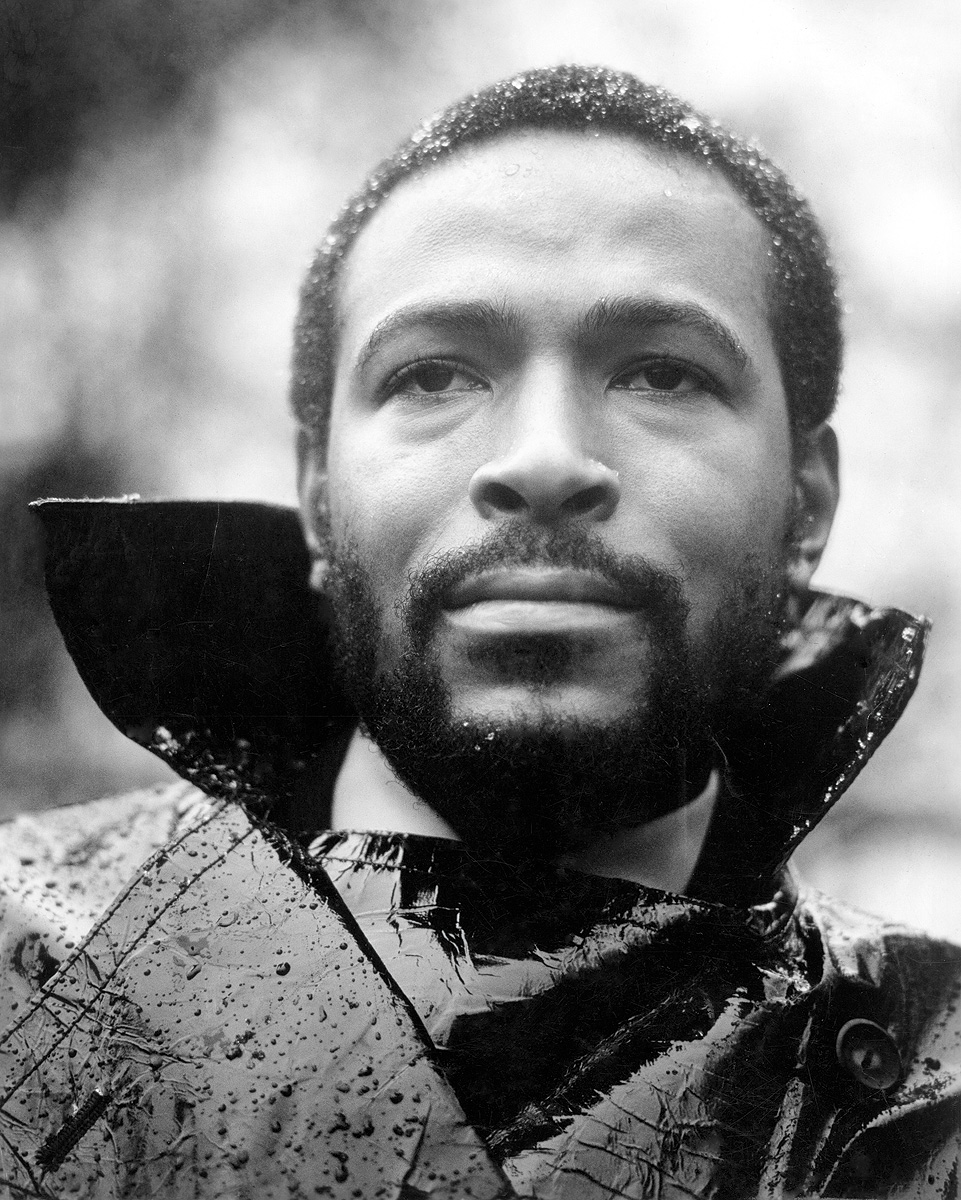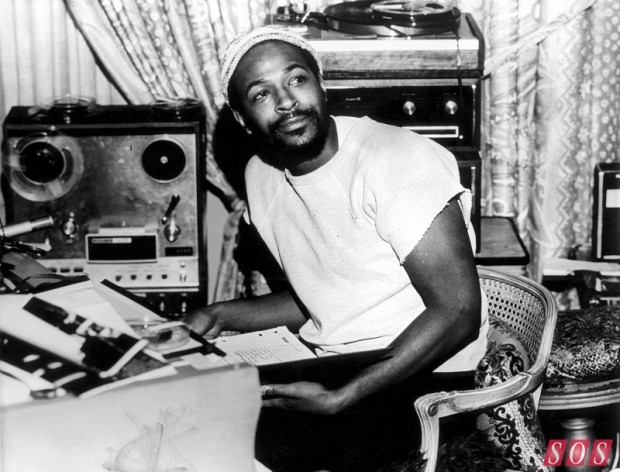In our society, true artistic visionaries are frequently undervalued, manipulated, and taken for granted – until they’re gone. Today, April 2nd, would have been Marvin Gaye’s 77th birthday. To pay tribute to the Prince of Soul, starting today and throughout the month of April I will be looking back on the albums that cemented his status as a creative force: his late-career body of work, from 1971’s What’s Going On through his final album, 1982’s Midnight Love. While Marvin recorded many classic tracks as part of the Motown “hit machine”, it wasn’t until 1971 that he took control of his own artistic direction. Today, I’m tackling the album that began Marvin’s creative renaissance: What’s Going On.
For Marvin Gaye, the late 1960s were a period of great success and great turmoil. After years of churning out recordings as both a solo artist and as a session musician for various Motown artists, he was beginning to gain a following outside of the United States for the first time. His 1968 smash “I Heard It Through the Grapevine” became his first #1 hit on the Billboard Hot 100. He quickly followed it up with further hits such as “Too Busy Thinking About My Baby” and “That’s the Way Love Is”, and his momentum seemed unstoppable.
However, commercial success did little to alleviate Marvin’s personal demons, both longstanding and new. His often-turbulent marriage to Anna Gordy was more contentious than ever; he was developing a growing addiction to cocaine that would later come to define the final years of his life; his debt to the IRS steadily increased; and his singing partner Tammi Terrell had fallen terminally ill from brain cancer, sending Marvin into a deep depression. On top of personal struggles, Marvin’s discontent with his career path on Motown Records had reached a boiling point. The vast majority of his early music was written by professional songwriters as part of the Motown hit-making machine, designed to churn out as many smash records as possible. But witnessing the 1965 Watts riots tapped into a deep well of anxiety over the direction of the world, as Marvin himself stated: “with the world exploding around me, how am I supposed to keep singing love songs?” Marvin began testing the waters as a producer, producing several hit records for The Originals, and defying Motown owner Barry Gordy by piercing his ear and abandoning his former clean-cut image for a scruffy, bearded look.
This rare mix of turmoil – both internal and external – and intense determination manifests itself in every facet of What’s Going On, Marvin Gaye’s 1971 magnum opus. One of the first unified concept albums in soul music, its nine songs tell the story of a disillusioned Vietnam veteran returning home from war to a divided and hate-filled country he barely recognized. In addition to putting storytelling front and center, the album also broke ground as one of the first times a Motown artist broke free from the label’s songwriters and producers to strike out their own creative vision. But none of these innovations would matter in the slightest if the record itself wasn’t a stunning, emotionally captivating body of work, equally powerful for its thematic vision and musical beauty. Basing his subject matter on conversations with his Vietnam veteran brother, Marvin never shies away from the darkness of war and human suffering – yet keeps his vision grounded in eternal optimism and faith in the human spirit. On the iconic title track, he sings of police brutality towards protestors and young lives lost to war… yet if the song’s theme has to be summarized in one motif, it’s that iconic refrain: “Oh, you know we’ve got to find a way/To bring some understanding here today”. Despite all of the darkness in Marvin’s life and throughout the world around him, he firmly believed in a world where love conquers hate, and a simple conversation could sway even the most cold-hearted to the side of peace and brotherhood. It is this essential purity, not only of composition but of thought, that defines the album throughout.
Even with its rock-solid consistency, What’s Going On tackles a truly remarkable breadth of subject matter throughout its 35-minute runtime, taking the listener through a journey through poverty, environmental devastation, drug addiction, and emotional pleas to the core of the human soul. “Flyin’ High (In the Friendly Sky)” contains one of the most stunning falsetto vocal performances of Marvin’s career, yet contrasts its lackadaisical psychedelic soul instrumentation with a harrowing tale of a Vietnam veteran addiction to heroin. Capturing both the highs and lows of substance abuse, the narrator confesses that “I’m hooked my friend/To the boy who makes slaves out of men”. The multi-part jam “Right On” tackles divisions in society between rich and poor, good and evil, compassion and selfishness; its Latin-accented composition, replete with maracas, flute, and jazzy piano, becomes increasingly urgent as Gaye’s lyrics turn more political. “Mercy Mercy Me (The Ecology)” is one of the most thematically unlikely hits in Marvin’s career, as he waxes poetic over human affects on the environment over a funky saxophone solo and haunting orchestration. Perhaps the most stunning aspect at play is that all of these disparate elements are truly part of a song cycle, with each track segueing flawlessly into the next.
https://www.youtube.com/watch?v=2J7s5QuTIas
This difficult balance of broad scope and thematic unity culminates in the album’s final cut, “Inner City Blues (Make Me Wanna Holler)”. The funky yet bluesy beat, driven by percussive bongos, portrays the ghetto as a jungle wasteland. Singing of a government that spends money on “moon shots” rather than “have nots”, bills that “pile up sky high”, and “trigger happy policing”, the iconic final track seems to end the journey What’s Going On on a note of hopeless desperation. Yet in the track’s final minute, the beat drops away, and the song cycle returns to its origins with a brief reprise of the opening title track. Like Marvin’s vision of life itself, What’s Going On is a cycle of light and dark, wealth and poverty, peace and war – yet one where the light within our collective consciousness eventually wins out. It is that idealistic spirit, from a man whose frequently miserable and despondent life could have given him every reason to lose hope, that makes the album truly timeless.

